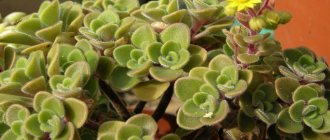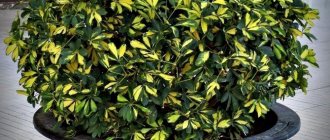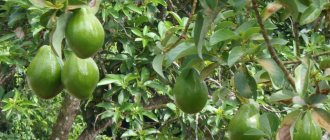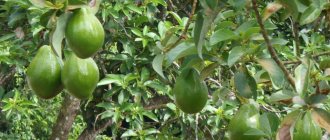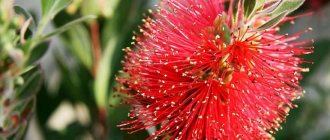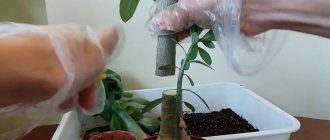Coffee grows in the form of small trees. This is an evergreen plant with hard grain-like fruits (the photo shows that they ripen like berries). They can be of different colors - from burgundy to dark brown.
The coffee tree grows only in warm countries. It has several species, but even more are hybrid varieties that have become more widespread. Some can be grown at home.
Characteristics
The tropics of Ethiopia are considered the birthplace of the coffee tree. The crop is perennial and lives a long time in favorable conditions, 35-65 years, sometimes up to 100. It bears fruit until a very old age. There are coffee plantations in Central and South America, Asia, and Africa. These are the largest suppliers. Brazilian beans and Arabica are highly valued.
Coffee grows (photos of trees in open areas are shown below) to an average height of 8-10 m. Its crown has large leaves and cream or white flowers. If the tree is grown on plantations for harvest, then it is pruned to 1.5-2.5 m. This makes caring for and picking berries easier.
Begins to bear fruit at 3-4 years of age. It does not tolerate frost, so it grows only in warm climates. Able to withstand slight temperature changes, but cannot tolerate extreme heat and scorching sun.
Flowering and ripening
The coffee tree blooms for a very short period of time - as soon as the rainy season begins. The flowers fade after pollination, so they last up to 2 days, but fill the plantation with the sweetish aroma of jasmine. The pleasant smell attracts bees - pollination occurs naturally.
The uniqueness of the process lies in the structure of the flowers. There are two types of coffee: Congolese (Robusta) and Arabian (Arabica). The latter has bisexual flowers with a stamen and pistil - the plant can be pollinated with the participation of bees, but self-pollination is also possible. To pollinate robusta, you will need two trees, since they are self-sterile, although bisexual. In this case, pollen transfer occurs with the help of wind and without the participation of bees.
Classification
Types and varieties of coffee are different concepts. The first refers to the plants themselves (“mother”), which were used to create new trees with different characteristics. A variety is a hybrid obtained through selection. This concept is also used to refer to a product that is presented on the market.
| Main types of coffee | Description |
| Arabica | This type is not only the most common, but also considered the best. The coffee turns out very tasty, with a pleasant aroma. However, the tree is capricious and grows only in a warm, favorable climate. Can withstand slight temperature changes. Arabica beans are long, smooth, and have a low amount of caffeine. The drink is slightly sour. |
| Robusta | Beans of this type contain a large amount of caffeine, and the drink is bitter. Robusta is most often added to various mixtures to make them stronger. The grains are small, with a dividing groove and small spots. |
| Liberica | Rarely used for export. Coffee is most often consumed in the country where it is grown. The main plantations of this species are located in Africa. Liberica is not for everyone. This coffee has a slightly spicy and bitter taste. Therefore, the drink is rarely drunk in its pure form; it is often added to other mixtures. This gives them an unusual taste and pleasant aroma. |
| Excelsa | This is the rarest type of tree. It can grow up to 20 m. The grains are collected manually. This species has excellent taste and rich aroma. |
There are more than 30 dozen varieties of coffee. Their main difference is taste. Arabica and Brazilian coffee are in greatest demand.
Harvest Frequency
Coffee grows for the first 3-4 years after planting without flowering. Then the first ovaries appear (the photo shows how beautiful the flowering plantations are). But the fruits do not always ripen after the first flowering. More often the berries appear the second time.
The first full harvest can be obtained from a five-year-old tree. The fruits ripen from 8 to 11 months. The harvest is harvested once a year, but in the equatorial climate - three times. Maximum fruiting is observed from 8 to 16 years of tree life.
Liberian coffee
Liberian coffee (p. Liberica bull)
is a tree 6-12 meters high with a pyramidal crown and very large leaves 16-35 centimeters long and 6-15 centimeters wide. The berries are elongated in shape, 2-3 centimeters in diameter. This species of coffee tree grows wild in the tropics near Monrovia in Liberia (West Africa). Currently, Liberian coffee is cultivated in Equatorial Guinea, Senegal and other African countries, as well as in Ceylon, Indonesia, Malaysia, and the Philippines.
It is resistant to many diseases, with the exception of rust. Since the tree produces fruits of mediocre quality, it is used primarily as a rootstock and for hybridization. Liberica coffee is only of local importance and is not widely used.
↑ up
Methods of collecting fruits
The fruits of the coffee tree are harvested in two ways - manually and using special harvesters.
Manually
It is quite labor-intensive and time-consuming, but is distinguished by high quality harvesting. Only ripe berries are picked by hand, since even if they are nearby, they differ in ripening.
The work is carried out daily until the entire harvest is harvested. This method is the most gentle.
Mechanized way
The method of collecting coffee fruits using special combines is simple and fast. They drive past trees and shake berries from them. Then their manual sorting begins. But the machine method can only be used on flat surfaces and in countries where the crop ripens at the same time. The disadvantage of this method is that not only ripe berries fall, but many become deformed.
Methods of growing a coffee tree
The exotic plant can be grown either from grains or from cuttings. How to grow a coffee tree is up to you. The most popular and fastest option is cuttings. Already grounded, ready-made cuttings with roots can be purchased at the store.
Only, alas, plants arriving from a different climate (region) may begin to get sick and wither. They will need a lot of time to recover and acclimatize. It is best if you can get a cutting from a ready-made coffee tree nearby.
Self-cultivation
Coffee grows (the photo shows adult dwarf varieties) at home in approximately the same way as in nature and does not create any special problems. The main thing is to follow the basic rules of care. In spring and summer, the plant is left at home and taken out to the balcony for the winter.
The photo shows how a coffee tree grows at home.
It is necessary to maintain air humidity above average, and during short sunny days equip with additional lighting.
The tree should be watered only with settled water. Twice a month you need to fertilize. Once every 3 years, the coffee tree is transferred to a larger pot. The plant must be protected from winds and drafts, avoid excessive watering, and in winter keep away from radiators and heating devices. For propagation, the method of growing from berries, seeds or cuttings is chosen.
Watering
Coffee is a water-drinker. In the spring-summer period, you need to water abundantly and often (every 2 - 3 days). But do not allow the soil in the pot to become waterlogged. Loosen the soil regularly to prevent it from clogging.
During the dormant period, watering should be reduced to once a week. In winter, simply do not allow the soil to dry out and maintain the general level of humidity.
For irrigation you need to use soft, settled water. If you have such an opportunity, water with rain or snow water. But do not forget that the liquid should be at least room temperature, and preferably a couple of degrees warmer. Cold water can cause shock to the roots, which can lead to all sorts of troubles.
How to propagate a tree?
Ordinary green grains from which the drink is prepared are not suitable for propagation. They are stored for a long time and undergo special processing. The best germination rate is for grains collected no later than 1.5 months ago. But the best option is to take a ripe berry. When growing, you need to maintain a temperature from +19°C to +24°C.
They are planted in peat mixed with coarse river sand and turf soil (1:1:2). The soil is prepared 14 days before planting the seeds. Immediately before the procedure, it is sterilized - kept for 10 minutes. over the vapor of boiling water. Before sowing, the grains must be kept in a weak solution of potassium permanganate and aloe juice.
The berries are placed in a damp hole on their side, flat side down. Sprinkle the top with earth and lightly compact it, water it, and cover it with film or glass. The seeds are placed on the surface, slightly pressed into the soil (if deep, they will begin to rot). The pot is placed in a well-lit, warm place, excluding the plant from exposure to the sun's rays.
Coffee grows (the photo shows how to plant it correctly) from berries in 3-6 months, from beans it takes less time - from 30 to 90 days. The sprouts are kept under glass or film covering until they shed their hard shell. Condensation is periodically washed off. Twice a week, remove the glass or film for 3 hours to ventilate the soil.
For propagation by cuttings, soil is taken from river sand and peat (in equal parts 1:1). The branches (cut obliquely 3 cm below the bud, with two leaves) are soaked in any growth stimulator for 4-5 hours. Then they are stuck into holes 3 cm deep, previously filled with coarse sand.
The cuttings are covered with a plastic bag with slits. They are made for ventilation and water infiltration during spraying. Plant as soon as 2 new leaves appear on the branch.
The easiest way is to buy ready-made seedlings in a specialized store. They should have shiny dark leaves, maybe with flowers or berries. But in stores, seedlings are often overfed with fertilizers. Therefore, after planting, the tree may turn yellow and lose its leaves. But as soon as she receives normal care, she recovers.
Answers to popular questions
Why are my tree's leaves drying out?
This occurs due to too dry air in the room. Place saucers of water next to the pot or use an automatic humidifier. You can also put wet pebbles or other pebbles, moss, etc. in the tray.
What to do if pests appear?
First of all, the plant needs to be isolated from other flowers. Then treat with insecticides. Take your time to return the pot to its place. It is likely that you will have to process it several times.
The leaves are very pale and inconspicuous. What's happened?
As mentioned earlier, coffee loves acidic soil. Loss of decorative qualities of foliage is one of the indicators that the soil mixture is not suitable. A transplant is needed.
There are dark spots on the leaves and they fall off. What to do?
There are two reasons for this phenomenon: insufficient watering or insufficient lighting. Check the conditions of the flower. If necessary, move it and feed it.
Landing rules
To grow coffee at home, breeders have developed special varieties. It is recommended to choose from Arabica varieties, for example, the dwarf Nana tree. It grows up to 80 cm in height and blooms twice a year. Robusta (Congo tree) is less demanding, but requires cross-pollination and is more difficult to achieve fruiting at home.
If there is little space in the room, then the Albert variety is more suitable. The Liberian tree grows large, with a pyramidal crown. It requires a large room or greenhouse. But there is also a big plus - it is resistant to many diseases of coffee trees.
Deadlines
Plant the sprouts in pots as soon as the first two leaves appear. Before this, you need to prepare the soil and place drainage material on the bottom of the flowerpot. Cuttings are also planted after the first leaves appear on them. The event is carried out in late spring, when the soil is well warmed up, or in the summer. Seedlings can be immediately planted in open ground, but it is recommended to keep them in a greenhouse for a month.
Preparing the pot and soil
Initially, sprouts can be grown in small plastic cups. Then the pot is selected depending on how developed the roots are. It is not recommended to replant the tree immediately into a large pot.
You need a pot volume larger than the root ball by 2-4 cm. Otherwise, they will begin to rot, as the soil will sour.
For growing, it is best to buy ready-made soil for citrus fruits in specialized stores. The coffee tree loves slightly acidic, clayey soil rich in organic matter.
You can prepare the soil yourself by mixing (parts of the proportion):
- peat (1);
- river sand (2);
- garden soil (2);
- manure with humus (4);
- crushed sphagnum moss (4).
Or mix all ingredients except moss in equal parts. Also suitable soil is soil for azaleas and gardenias. Additionally, prepare a drainage layer (for example, a mixture of coarse river sand with nut shells), which is poured onto the bottom of the tub.
Landing technology
More often, coffee trees are planted by cuttings. Before planting, their roots are kept in a Heteroauxin solution for 3 to 5 hours. The soil is disinfected with a solution of potassium permanganate. The cutting is immersed vertically in the ground, 2.5 cm. Then the ground is watered again with a solution of potassium permanganate. Cover the top with a large plastic bag with holes.
They serve for aeration and spraying until the cuttings take root well. The pot is placed in a place with diffused light. The room temperature is maintained from +25°C to +30°C. As soon as the true top leaves appear on the branches, they are transferred to freer pots. The original diameter is 12 cm.
The shard is thrown onto the bottom with the convex side up. A centimeter layer of coarse sand is poured onto it. Then the cutting, pulled out together with a lump of earth, is placed on top and covered with soil. For 10 days the pot is placed on a window on the north side. Then you can move it to a permanent place.
If seedlings are taken, they are first placed in greenhouses for 6-12 months, when it grows to 30 cm. Then they are transplanted into well-warmed soil. The area should be illuminated and protected from the wind.
Recommendations for self-cultivation
Coffee grows (the photo shows what a healthy tree should be like) without special additional conditions - on the floor in tubs, on window sills. It is easy to care for. If everything is done on time and correctly, then the first flowering is observed already in 3-4 years.
In order for a tree to bear fruit, it must be wintered. Three basic rules of care: watering, fertilizing with fertilizers and organic matter, and replanting. To achieve a beautiful crown, install a mirror opposite the tree, but do not allow the sun's rays to be reflected on the plant.
Air temperature
The plant in spring and summer should be at a temperature from +23°C to +25°C. The first value is considered optimal. In winter, the temperature in the room or balcony where the tree stands should be from +15°C to +17°C.
If it is not possible to take it out to a closed loggia, then place the pot on the windowsill and close the radiator, blocking the flow of heat. You can limit it with a fence to direct it only indoors.
Lighting
The tree does not tolerate heat and scorching sun. Under such conditions it will not bloom. The tree is placed in a well-lit place, but shaded from the sun. If the pot is located near the south window, then it is moved to a distance of 1.5 m. Additional lighting is required only when the tree is in a dark corner or during short winter days.
Watering
From May to October (especially in the summer months), the tree is sprayed daily with settled water from a spray bottle. Once every 30 days, an ash solution is added to it. This is necessary to prevent diseases and pests. Dust and dirt from the leaves are washed off with a damp cloth.
The tree can be watered from the shower once a month. In winter it does not need spraying.
The plant loves moist soil, but if there is too much water, the roots will begin to rot. To prevent this, drainage material (for example, nut shells) is poured onto the bottom of the pot. You can tell that a tree is suffering from a lack of moisture by its drooping and limp leaves. After watering, they immediately rise and straighten out.
The frequency of watering is determined by humidity and temperature in the house. The water is first left to sit for a day. Water the soil when its surface is 1 cm dry. If the room is very warm, it is enough to moisten the soil a couple of times a week, and in winter - once a week.
How to feed correctly?
The coffee tree needs good feeding. It is best suited for ready-made complex fertilizers, organics (for example, Sapropel mud), intended for indoor flowers or with chicken droppings. During flowering, water 1-2 times with a solution of water with ash from straw enriched with potassium.
From March to November it is recommended to apply one fertilizing every two weeks, then until February – once a month. From March to June, the tree is fed with nitrogen fertilizers. Then mineral and organic are added once each.
In summer, monosubstituted potassium phosphate is used at intervals of 10 days. But organics are excluded. In September, the soil is fertilized with potassium salts, spraying the crown with the solution.
Citric acid is injected into the soil monthly to increase the pH. A bucket of water requires 1 g of powder or 2-3 tsp. natural juice. The leaves are wiped with the same solution if they become dull.
How to transplant correctly?
The coffee tree does not tolerate any movement. Therefore, it is not recommended to rearrange it; if necessary, then no more than once every 5 years. Frequent transplantation is not required. The longer the tree is in one pot, the better the horse system develops. The need for replanting is determined when the roots have already completely densely filled the flowerpot.
Before transplanting into another pot, remove dried, rotten shoots.
Then fill the bottom with drainage and earth so that the root neck rises above the surface by 5-7 mm. The remaining space is filled with fresh substrate. Then water it with soft water, the temperature of which should be slightly above room temperature. After a couple of days, lightly loosen the soil.
If it has settled a little, add manure humus or weathered peat. Up to three years of age, transplantation is carried out annually, then once every 2-3 years. The event is scheduled after the harvest, before the next flowering (this is approximately 30 days).
Trimming
More often the tree grows in a standard form. It does not particularly require pruning, only if it is necessary to remove dry and damaged branches or give the crown the desired shape. If you don’t form the trunk yourself, the tree can grow spherical.
In the first 12 months, the shoots are not touched. If you want to get a tree with a dense crown, then after the trunk becomes 25-30 cm high, it is tightly tied with wire at a level of 15-20 cm, a centimeter below the internode.
You can trim so that 2 remain. The top shoot is pinched. Then all the branches that go up from the wire are cut off, and the rest are shaped as desired. After 3-4 years, the wire is weakened and removed after a month. It is not recommended to prune standard trees, otherwise it may stop growing.
Rest period
Around October, when the cold weather sets in, the tree is given a rest. It is moved to a room with a temperature from +12°C to +15°C. Water during rest only when the top layer of soil is dry. Additional lighting is provided for it for 4-5 hours a day. At the end of February or early spring they begin to bring it into the room. Once the desired temperature is reached, leave it in the room.
Transfer
While the coffee tree is young, it is replanted every year. Upon reaching the age of three, the growth of the tree slows down. Accordingly, the frequency of transfers is reduced. It will need to be carried out approximately once every four years.
Replanting a plant is no different from a similar process carried out with other indoor flowers. On the contrary, replanting a coffee tree is even easier, since it has stronger roots.
Saplings
ON A NOTE! But this does not mean that you need to work sloppy. Still, try not to damage the root system.
- First of all, prepare a pot of suitable size, proper soil and drainage.
- First, place the drainage in a new container.
- Then remove the plant from the old pot. This must be done using the transshipment method.
- If old drainage is stuck to the bottom, carefully shake it off.
- Carefully remove the old soil.
- If you want to plant the cuttings in different pots, then place the entire plant in a bowl of warm water and carefully wash off the remaining soil. Next, carefully separate the tangled roots of each stem.
- Sprinkle the drainage in the new pot with soil and place the seedling there.
- Carefully add soil to the desired level and water the transplanted plant.
IMPORTANT! If you are not replanting, then change the top layer of soil. This is necessary so that the earth does not become depleted.
Possible problems
Due to lack of moisture, the edges of the leaves darken and dry out. Then you need to spray the plant again or turn on the humidifier. From excessive watering, the foliage turns yellow, rots and falls off. Therefore, you need to reduce the amount of moisture or moisten the soil less often.
Other options:
- When the crown begins to turn yellow, this may indicate the appearance of root rot. Replanting with root treatment is needed.
- Brown spots indicate nitrogen deficiency. It needs to be replenished with fertilizers.
- If the leaves of a young tree turn yellow, but green veins remain, this indicates low acidity of the soil. Then you can add sphagnum moss to it.
- When holes appear in the leaves, these can be burns. Especially if the tree is in direct sunlight. Then it needs to be moved to a shaded place.
- Leaves fall in winter due to insufficient lighting. You need to turn on an additional lamp for several hours.
- The tree will grow slowly if you do not fertilize it regularly. The situation can be corrected by providing fertilizing in the required quantity.
- Leaves have yellow spots and wrinkle. This is a sign of potassium deficiency or the result of watering with hard water. It is necessary to apply the necessary fertilizer and use only settled water for irrigation.
- To get rid of brown or purple spots that appear when there is a deficiency of phosphorus in the soil, you need to apply fertilizer or replant the tree in citrus soil.
- A young tree may have leaves that are light yellow and small if it lacks iron. It is necessary to add the necessary fertilizer to the soil.
- If the tree becomes sick after transplantation due to exposed roots, then the pot is placed under a plastic bag. Water only once a week and spray daily. Feeding is temporarily stopped. Every 4 days, spray with “Epin” (2 drops of the drug are needed for 0.2 liters of water).
Among the pests, a tree can be affected by spider mites, mealybugs, and scale insects. Then the plant is treated with insecticides.
The drug Fitoverm is usually used. Take 5 ml/0.5 l of water. The infected tree is sprayed twice, every 7-10 days.
If you are planning a trip, then in order to avoid the death of the tree, you need to prepare it. Remove all flowers and fruits so that it requires less moisture.
The tops of new shoots are pinched to stop their growth. Just before leaving, the tree is placed on a wet foam mat, which is first placed in a container of water. The drainage hole is loosely plugged with a piece of foam rubber.
If possible, you can buy it and connect it while the automatic watering device is unavailable.
Coffee grows both on plantations, in greenhouses, greenhouses, and at home (the photo shows dwarf trees). The plant is unpretentious in care. The main thing is to maintain temperature conditions, proper watering and fertilizing. At home, the tree rarely gets sick, and the risk of pest damage is reduced.
Diseases and pests
All problems are directly related to improper care. This creates a favorable environment for the emergence and development of such ailments:
Rust
If a fungus is detected, take immediate action and treat the plant
This dangerous disease is caused by a fungus. It can be diagnosed by spots of characteristic color. Treatment is not easy, but success is guaranteed if all rules are followed. Treatment continues until the fungus disappears. Bordeaux mixture is used.
Shchitovka
The first signs of its appearance are uncharacteristic dots on the surface of the leaf, reminiscent of a turtle shell. It feeds on green juice, which is why the crop quickly begins to wither, become sick and become deformed. They cannot be found on healthy exotics. Their “prey” is weakened plants. The first aid when discovering a “find” is complete isolation.
If the number of colonies is small, then it is worth washing the leaves under warm water or a cloth soaked in a soapy solution. After the branches have dried, they can be sprayed with special chemicals.
Whitefly
Geranium is especially dangerous in this regard. This uninvited guest is most often the source of insects. If there is such a green “neighbor” near the coffee beauty, then it is worth carrying out a preventive examination as often as possible. If you notice larvae or already formed adults, it is better to use an insecticide. However, the mechanical method of cleansing does not work in this case.
If necessary, the procedure is repeated after 10 days, and so on until it is completely eliminated.



